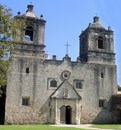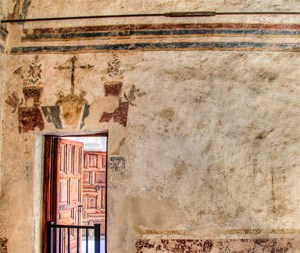
Mission Nuestra Señora de la Purísima Concepción de Acuña
San Antonio Missions National Historical Park
San Antonio, Texas
Coordinates: 29.390124,-98.492408
#TravelSpanishMissions
Discover Our Shared Heritage
Spanish Colonial Missions of the Southwest Travel Itinerary

NPS photo.

NPS photo.

NPS photo.

NPS photo.
Plan Your Visit
Mission Concepción is included in San Antonio Missions National Historical Park, a unit of the National Park System composed of four missions located in separate locations in San Antonio, TX. Click for the National Register of Historic Places file: text and photos. The main park visitor center is located at Mission San Jose 6701 San José Dr. Mission Concepción is located at 807 Mission Rd. All sites at the San Antonio Missions National Historical Park are open daily from 9:00am to 5:00pm, except on Thanksgiving Day, December 25, and January 1, and during special services such as weddings and funerals. There are no admission fees. For more information, visit the National Park Service San Antonio Missions National Historical Park website or call 210-932-1001.
Mission Conception has been designated a National Historic Landmark. Click here for the National Historic Landmark file: text and photos. Many components of the National Historical Park have been documented by the National Park Service’s Historic American Buildings Survey, including the San Antonio Missions National Historical Park Site Plan and Mission Concepcion. The San Antonio Missions are also featured in the National Park Service The San Antonio Missions are also featured in the National Park Service South and West Texas Travel Itinerary, the Places Reflecting America’s Diverse Cultures: Explore their Stories in the National Park System Travel Itinerary and the American Latino Heritage Travel Itinerary. San Antonio Missions National Historical Park is also the subject of the online lesson plan, San Antonio Missions: Spanish Influence in Texas. The lesson plan has been produced by the National Park Service’s Teaching with Historic Places program, which offers a series of online classroom-ready lesson plans on registered historic places. The San Antonio Missions National Historical Park has been designated a UNESCO World Heritage Site.
Last updated: April 15, 2016
